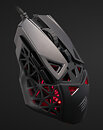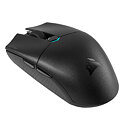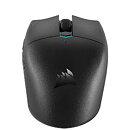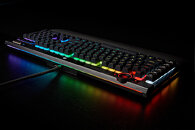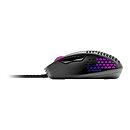
ASUS Intros ROG Strix Impact III Gaming Mouse
ASUS introduced the ROG Strix Impact III, a lightweight, compact, quasi-ambidextrous, wired gaming mouse. Measuring 126 mm x 62 mm x 39 mm (LxWxH), and weighing just 59 g, the mouse is optimized for mainly claw and fingertip grip types, as its slender design may not be the best fit for palm grips. FPS is the most suitable game genre for this mouse. It features a 5-button layout—two main buttons, two left-side buttons, and the middle-click, along with a vertical scrollwheel. There's also a physical button to cycle among dpi presets, which is set in the ROG Armory app. Under the hood, the ROG Strix Impact III rocks a PixArt PAW3318 optical sensor with 12,000 dpi hardware resolution, with 300 ips top speed, and 35 ips acceleration, along with a USB polling rate of 1000 Hz. The main buttons are backed by 70 million-click rated ROG microswitches. PFTE gliding feet, and a braided USB cable makes for the rest of it. The company didn't reveal pricing.























































